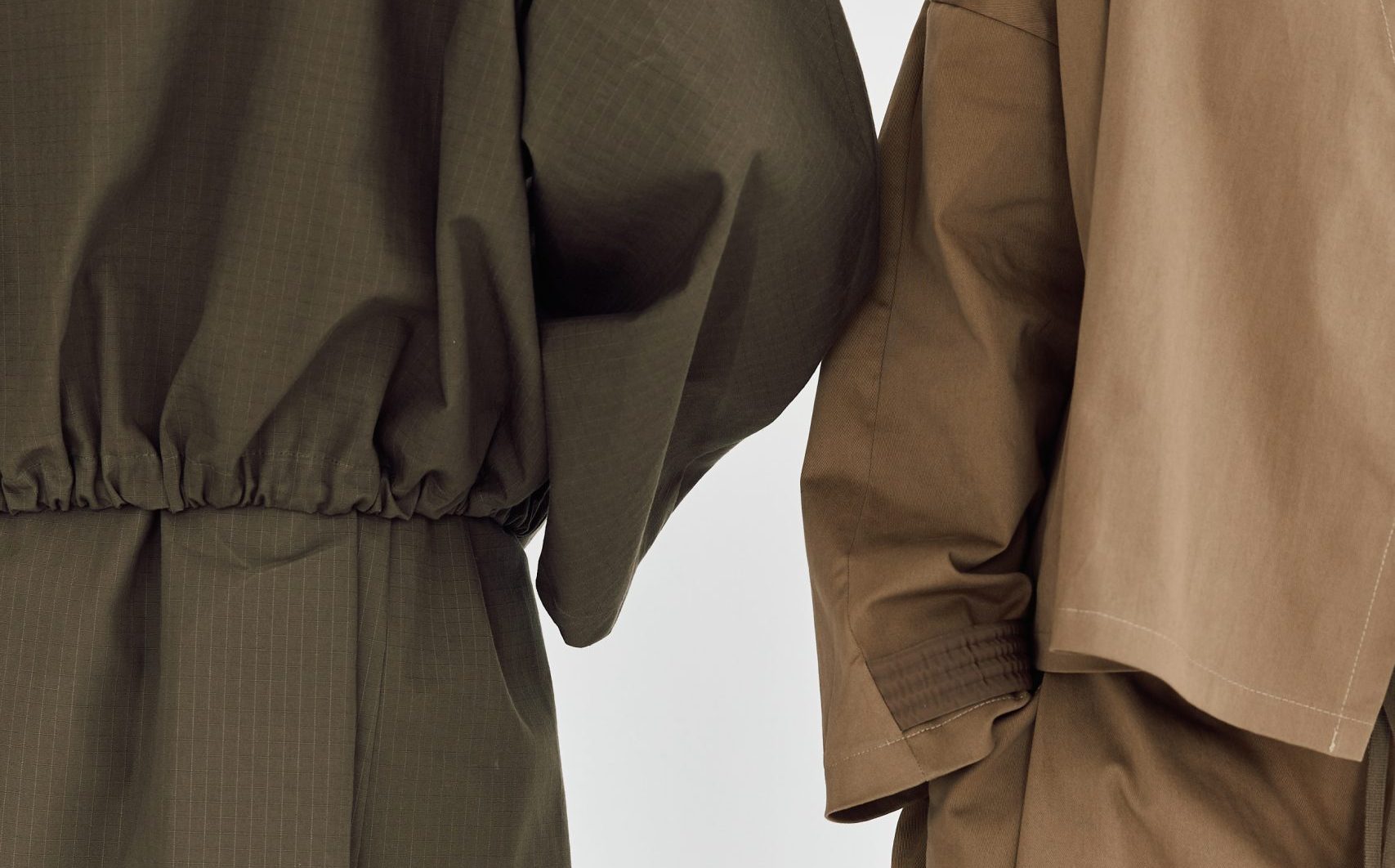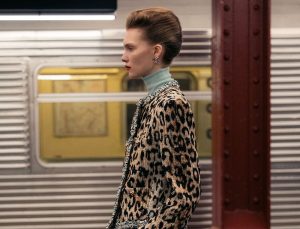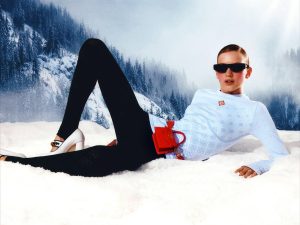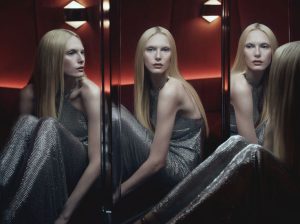Whether revisiting archetypes, redefining femininity, or creating new narratives around gender, this season designers made their stance clear. Here are six key moments that defined the Spring/Summer 2026 edition.
New York City as a starting point
This season, more than just a backdrop, New York City became a true source of inspiration for designers. At Calvin Klein, Veronica Leoni reinterpreted the house’s iconic codes mainly the branded underwear waistband, upgrading it into a premium detail. Tailoring, slightly classic at first glance, took on a kimono-inspired silhouette, while demure square necklines playfully unveiled bold underpinnings. With her second collection, the designer is laying the first stones of an evolving gallery of characters.
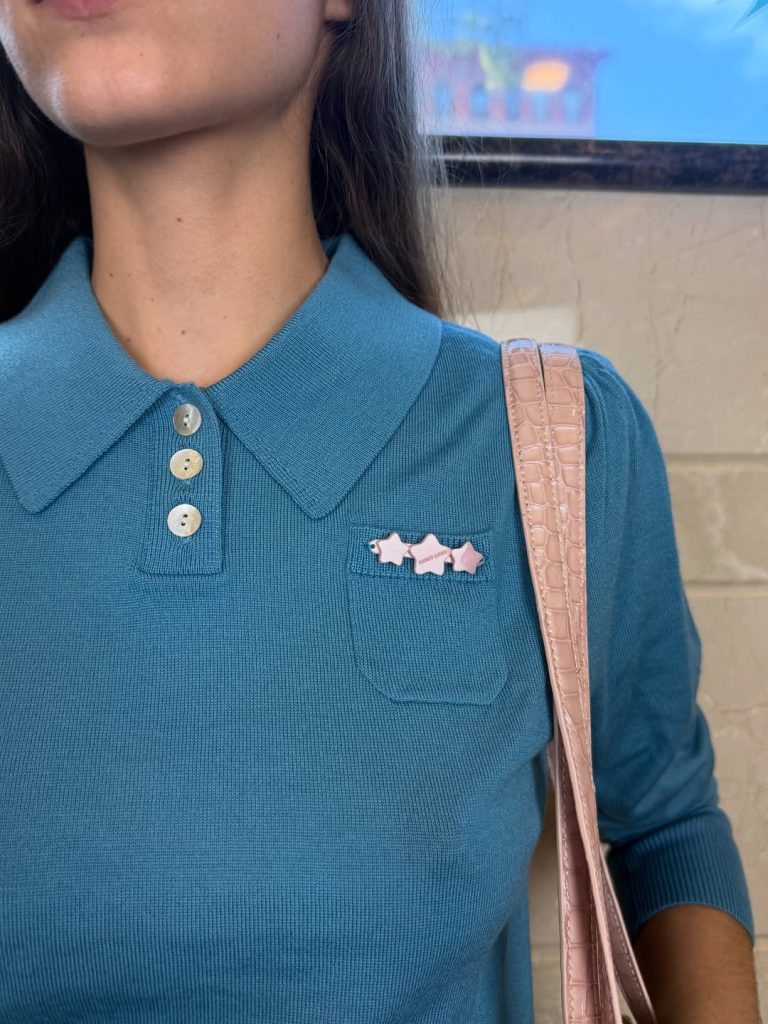

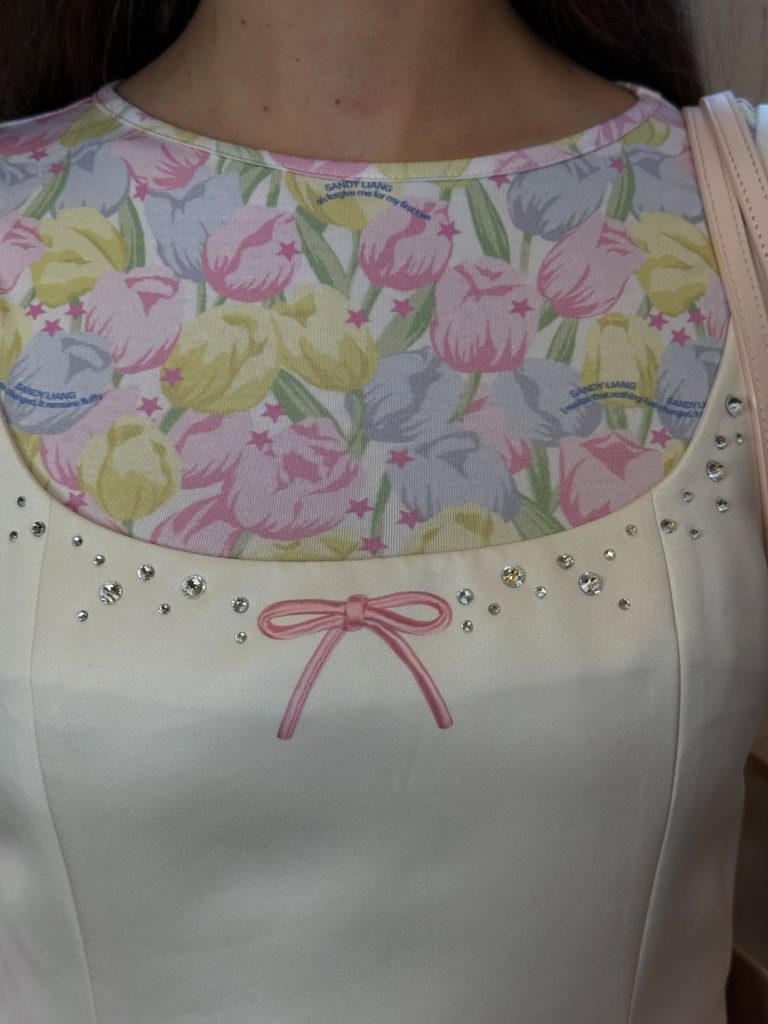
Sandy Liang, meanwhile, made Chinatown the beating heart of her collection. Inspired by the grandmothers of New York’s famed Chinese quarter, she offered girlish silhouettes blending pastels, gingham, lace, oversized buttons, and playful childlike touches. With this collection, the designer uses clothing as a tribute to these often unseen yet foundational female figures. Elsewhere, Valentino Beauty tapped into collective memory by taking over the legendary Studio 54 for one night only. The club came alive once more, thanks in part to its icons from Cher to Lenny Kravitz, who showed up again in style. As fashion influencer @Lyas put it: “it was so good.”
Rewriting feminity
This season confirmed that femininity, for many designers, doesn’t (only) rhyme with sensuality. Tory Burch expressed it with precision: below-the-knee skirts, streamlined lines, and a sharp palette: red, yellow, blue, as if injecting vitality into an intentionally restrained silhouette. At Khaite, a similar scenario of controlled tension unfolded: rich textures, exacting cuts, and, as a highlight, a silhouette emerging from the mist. Meanwhile, Amy Smilovic at Tibi expanded her exploration of contrasts, drawing inspiration from the Brutalist architectural movement.
Gender trouble
To explore duality, Collina Strada staged a striking mise-en-scène: models walked in pairs, dressed identically. One, in color, led the way; the other, in black and veiled, followed a few steps behind like a shadow. This doubling act underscored the garment’s inherent ambivalence. A wedding dress, for instance, becomes a mourning gown when shifting from white to black. By playing with such oppositions, the designer questions how context social, political, or intimate transforms the meaning of a piece, and by extension, the way we wear it.


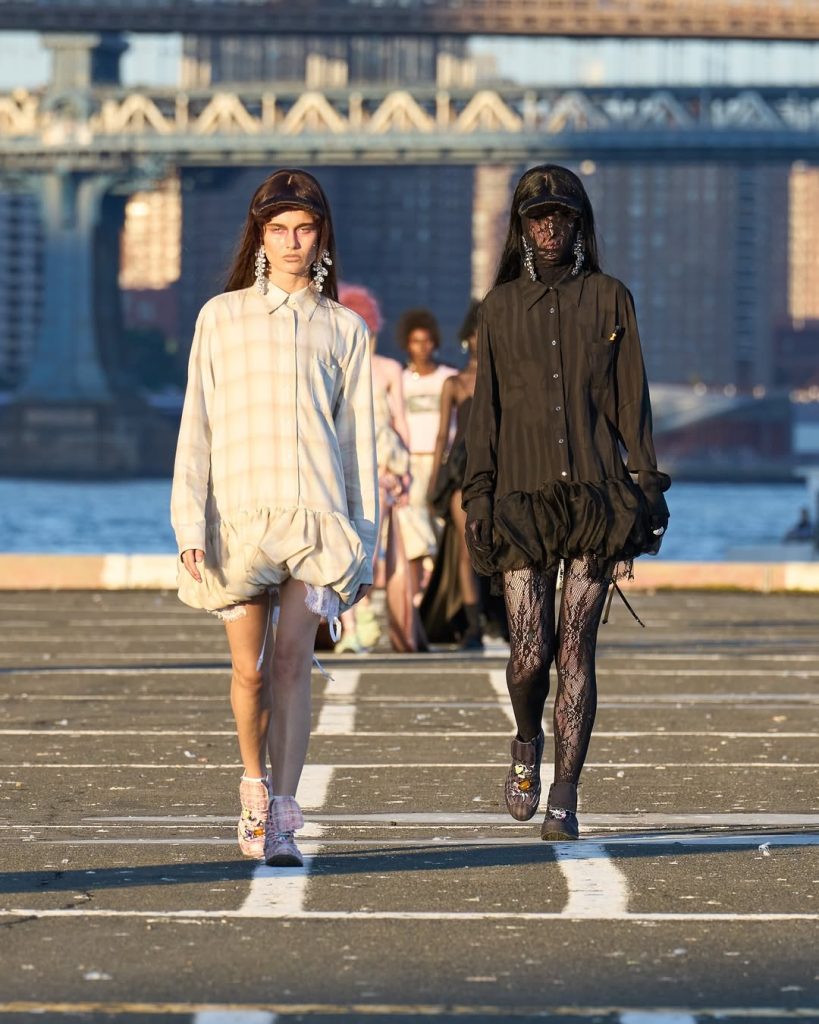
At Khaite, the thick fog enveloping the runway deliberately blurred the immediate readability of the silhouettes. A bold move for a show meant to present a full collection. Here, the clothes don’t reveal themselves at first glance. They resist, slipping away for a moment, only to be gradually discerned. As if we were being asked to unlearn the habit of seeing too quickly.
Precision as a manifesto
In an industry where a relentless pace often dictates form, several houses have turned rigor into a commitment. At Khaite, every piece passes through the hands of creative director Catherine Holstein before being approved. “I’m a big believer that your best marketing tool is good product,” she told WWD, a philosophy applied to the letter. Finally, Collina Strada, usually more flamboyant, stripped things back by reworking the same patterns in different colors. By removing color as a distraction, the designer all the more clearly demonstrated her command of cut and volume.
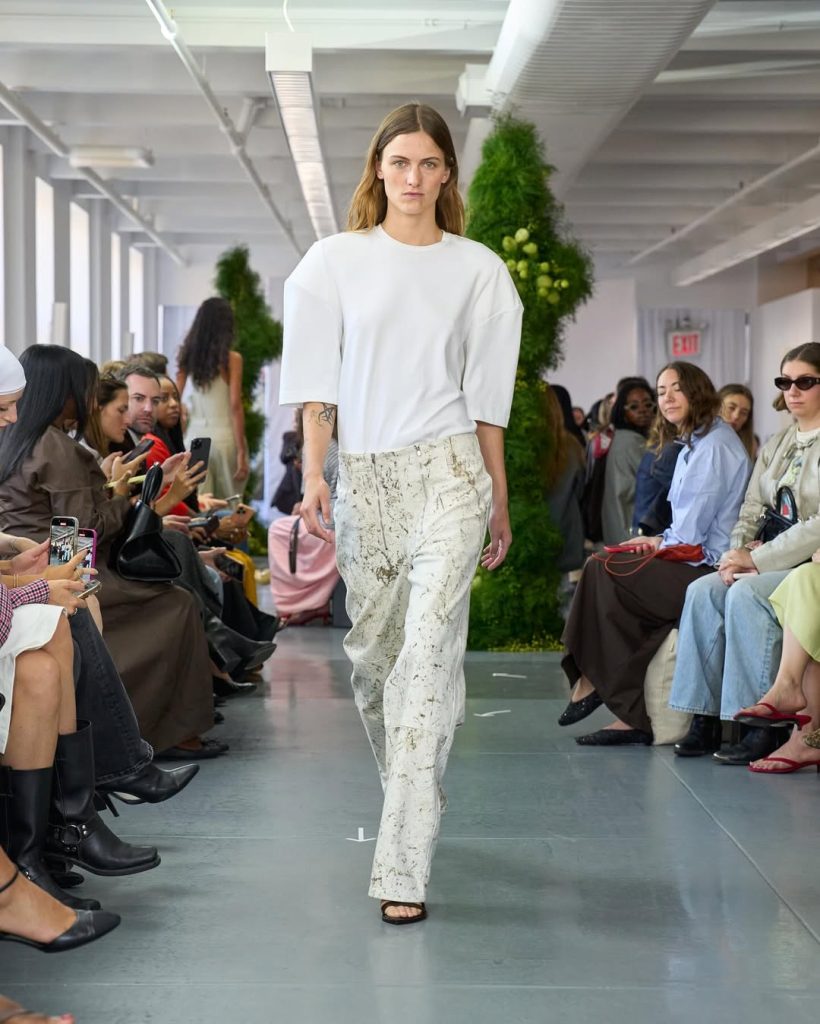
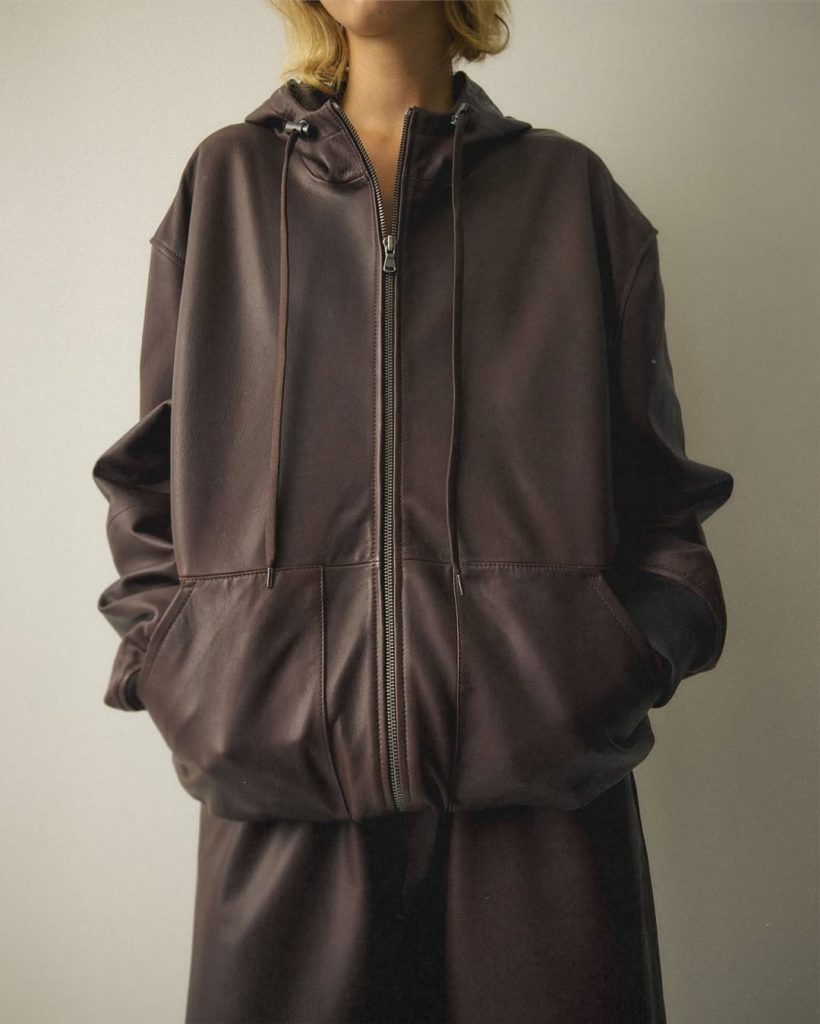
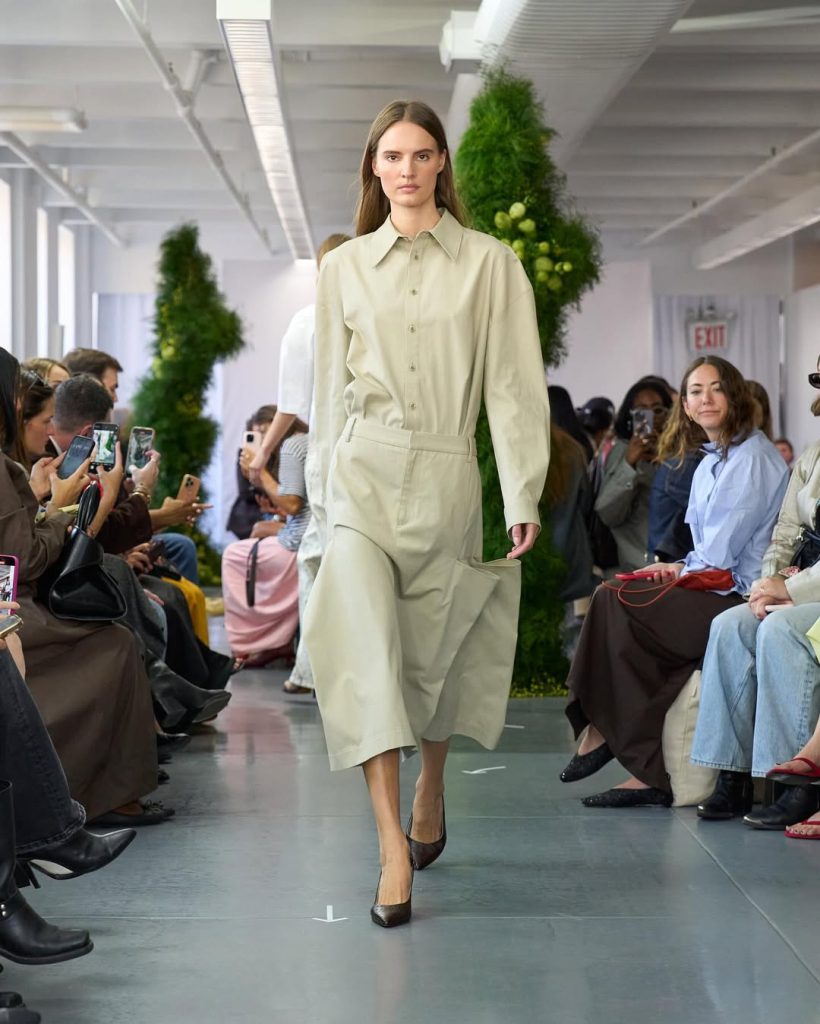
What stands out from this New York Fashion Week: collections conceived as responses to the world’s ambiguities, balancing personal and collective memory. Some designers invoked the intimate, a grandmother figure, a city, an emotion while others explored shadow, tension, or resistance. Across the board, a shared intention emerged: to slow down, to reflect, to tell stories differently. These collections framed clothing not merely as trend or product, but as a medium, a space of dialogue between self and world.




